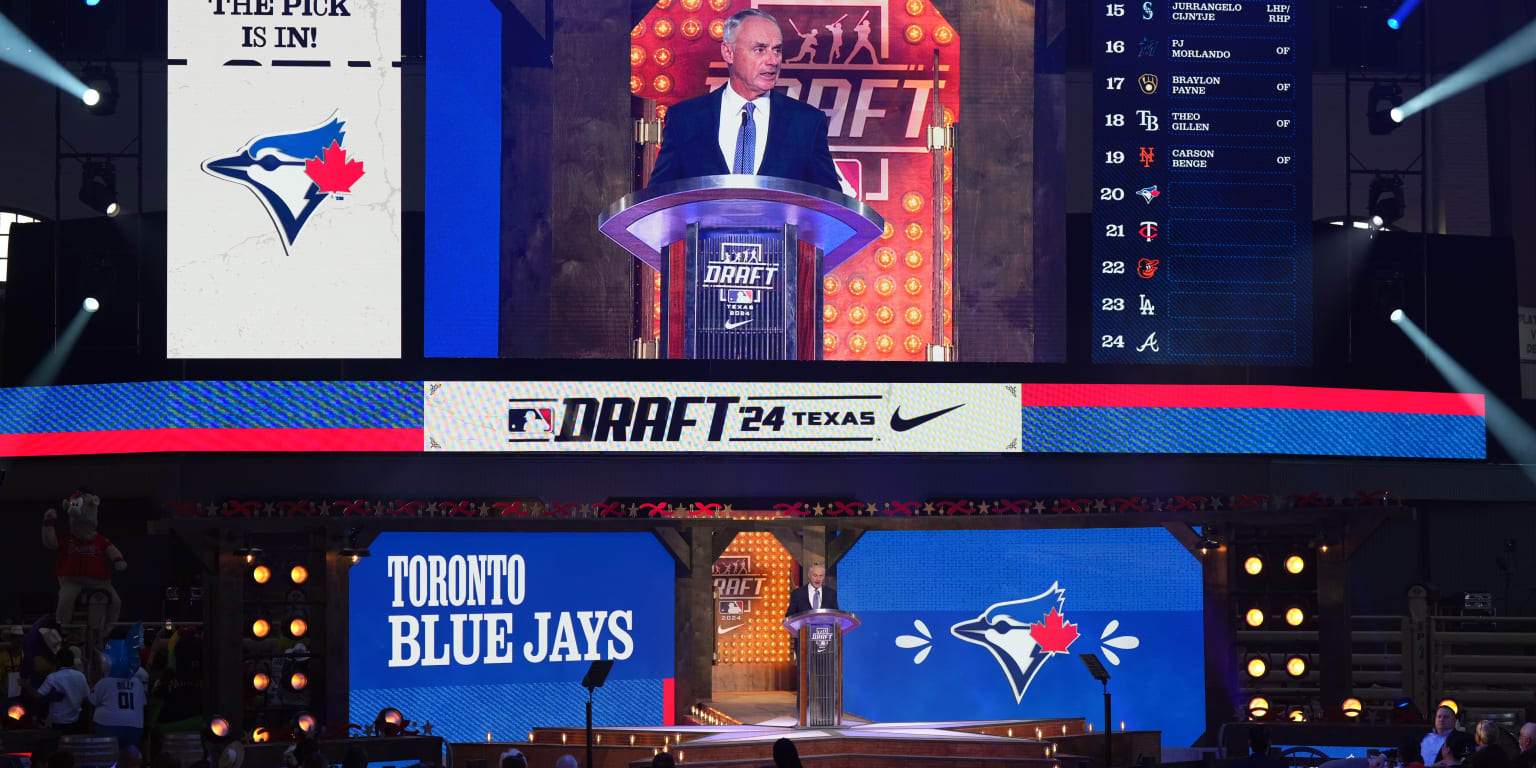Sports
Blue Jays continue stockpiling arms on Day 2 of Draft

TORONTO — The Blue Jays’ fancy new pitching lab is getting crowded.
Coming off their selections of Trey Yesavage and Khal Stephen on the first night of the 2024 MLB Draft, the Blue Jays continued to stockpile pitchers in the middle rounds, continuing a trend we’ve seen since 2021.
After dipping into the prep ranks for left-hander Johnny King IV in the third round, the Blue Jays also selected right-hander Jackson Wentworth (Rd. 5), right-hander Austin Cates (Rd. 7) and right-hander Colby Holcombe (Rd. 9).
Let’s use the 2020 Draft as a “before and after” line, given that it was shortened to just five rounds due to the COVID-19 pandemic.
In the three drafts prior (2017-19), the Blue Jays selected an average of just three pitchers in the first 10 rounds. It was most pronounced in 2019, when they selected only two, including first-rounder Alek Manoah. Coming out of 2020, though, the Blue Jays began stockpiling arms. In the four drafts from ’21-’24, they’ve averaged six pitchers selected in the first 10 rounds, which is the number they landed on in this class.
Pitchers drafted in first 10 rounds:
– 2024: Six
– 2023: Four
– 2022: Six
– 2021: Eight
Teams don’t chase “need” like you’d see in the NFL, but it’s still in the back of their minds.
Chris Bassitt has one year left on his deal after this season. Kevin Gausman will have two. José Berríos, whose full deal runs through 2028, can opt out after ‘26, when Gausman’s deal expires. Manoah, who underwent Tommy John surgery a month ago, could miss most of ‘25 and his future beyond that is uncertain.
As talented as this rotation is right now, the future comes quickly and the Blue Jays have taken a higher-quantity approach to developing some of their own arms to replace these veterans when the time comes.
Short-term potential:
Yesavage (Rd. 1), Stephen (Rd. 2) and Wentworth (Rd. 5) all throw four pitches with the potential to be effective in the big leagues, while Austin Cates (Rd. 7) comes with elite control, as he walked just 15 batters over 90 1/3 innings at UNLV last season. We’re talking about pitchers with significant differences in their present talent and long-term upside, of course, but their fit in the Blue Jays’ system brings them together.
Let’s look at Double-A and Triple-A. The Blue Jays have run into injuries with some of their top young arms, including No. 1 prospect Ricky Tiedemann and No. 9 prospect Adam Macko. On top of that, they haven’t gotten a breakout season from the group of Chad Dallas (No. 15), CJ Van Eyk (No. 16) and Connor Cooke (No. 18).
Toronto is starting to develop some exciting young arms at the lower levels, where the benefits of the new player development complex are clearer, but the upper levels of this system need pitching help soon, not just eventually. Similar to prospects like 2023 fifth-rounder Connor O’Halloran, this year’s college pitching selections bring immediate polish to the system and could move quickly to align themselves with the Blue Jays’ next competitive window in 2026 and beyond.
Long-term upside
The other side of Toronto’s recent drafting trends with pitchers has been more swings on upside, particularly out of high school or junior college.
Enter King, who the Blue Jays selected in the third round, 95th overall. King was ranked as the No. 124 prospect in the class, but as a “terrific athlete” with an “NFL quarterback type of build,” this is another fascinating project for the Blue Jays’ player development staff and the new complex.
Think of Tiedemann, who exploded physically after joining the Blue Jays as a third-rounder in 2021 out of junior college. Think of Landen Maroudis, the Blue Jays’ No. 12 prospect, who is unfortunately done for the year after undergoing elbow surgery, but prior to that experienced a velocity bump and was the fastest-climbing pitcher in the system in just his first year.
It’s the same story for 2022 first-rounder Brandon Barreria, who is also done for the year after undergoing Tommy John surgery but who was also starting to flash significant gains before the injury.
The key, obviously, is for the Blue Jays to keep one of these high-upside projects healthy. They’ve shown they can get more out of these young arms, though, and at 6-foot-3, 210 pounds, King is another great case to work with. He doesn’t turn 18 until July 26, and it’s young projects like these with greater upside that can balance out some of the Blue Jays’ NCAA picks.


)






